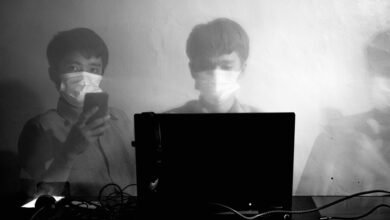Secssagem: the Hidden Persona

In the digital landscape, individuals often grapple with the tension between their authentic selves and the curated identities they project online. This phenomenon, known as secssagem, raises critical questions about the motivations behind such self-representation. It serves as both a shield and a mask, impacting interpersonal relationships and individual self-esteem. As this duality unfolds, the implications become increasingly complex, revealing a landscape that is as liberating as it is confining. What lies beneath these constructed facades?
The Duality of Identity in the Digital Age
How does the proliferation of digital platforms reshape one's sense of self?
The tension between digital authenticity and online anonymity creates a complex duality of identity. Individuals navigate this landscape, curating self-representations that may diverge from their true selves.
This dance between visibility and obscurity challenges the notion of a singular identity, promoting a multifaceted existence that both liberates and confines the individual.
Motivations Behind Curating Online Personas
The act of curating online personas stems from a complex interplay of psychological, social, and cultural motivations.
Individuals employ projection strategies to navigate authenticity challenges, seeking connection and validation in a fragmented digital landscape.
This duality reflects a desire for freedom—freedom to shape identity while grappling with the dissonance between genuine self-expression and the constructed images that often dominate online interactions.
Implications of Secssagem on Relationships and Self-Perception
What ramifications does Secssagem hold for interpersonal relationships and individual self-perception?
The self-esteem impact of curating a false identity can distort relational dynamics, leading to superficial connections and an erosion of authenticity.
As individuals grapple with their hidden personas, they may experience dissonance between their true selves and online portrayals, ultimately undermining genuine intimacy and fostering insecurity in relationships.
Conclusion
In the digital landscape, individuals weave intricate tapestries of curated identities, often obscuring the authentic threads of their true selves. This duality, akin to a masquerade ball where masks are both a shield and a prison, reveals the delicate balance between self-expression and deception. As the lines between genuine connection and artificiality blur, individuals must confront the profound implications of their hidden personas on relationships and self-perception, ultimately challenging the very essence of identity in an increasingly fragmented world.




